
If you run a business with a website, you’ve probably heard you should have a blog. That’s because blogging can be a powerful way to increase traffic to your site, establish your expertise, boost search engine optimization (SEO), increase conversions and develop an ongoing relationship with your audience.
But these benefits don’t magically occur by writing one blog post. Instead, they result from a commitment to producing high-quality blog posts time after time.
Luckily, it’s possible to craft top-notch posts by adhering to a few tried-and-true guidelines. Whether you’re new to the world of blogging or you want to take your blog to the next level, incorporating the following components into each post helps ensure your blog gets results.
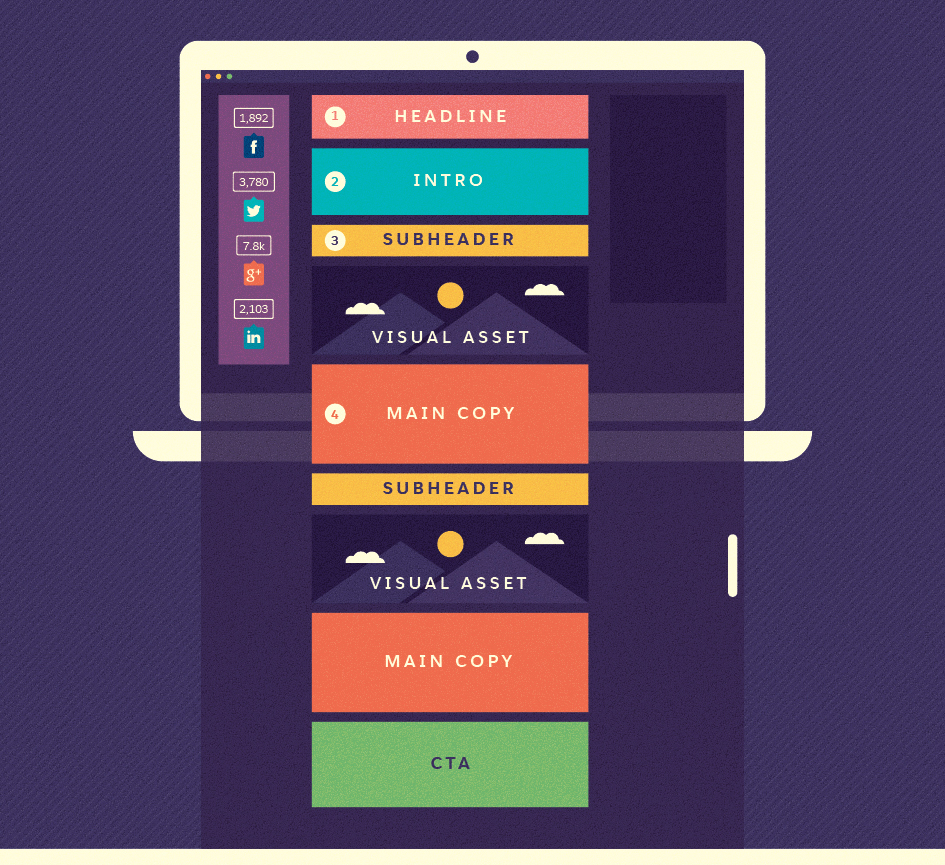
Element #1: The Headline
The headline is one of the most critical components of a blog post—and it’s also the easiest piece to overlook. By the time you finish composing a lengthy post, it’s tempting to slap on a relevant headline and call it a day. But it’s important to spend time crafting the perfect title for your post.
Research suggests headlines can influence traffic to a post by as much as 500 per cent. According to digital marketing agency Koozai, the most alluring headlines contain one or more of the following elements:
- Descriptive adjectives
- Keywords
- Numbers
- Promises (“These 9 Kitchen Hacks Will Save You an Hour in the Kitchen,” for example)
- Rationale (tips, hacks, etc.)
Each time you craft a headline, experiment with different combinations of these elements until you settle on a version that sounds enticing without being overly gimmicky.
Headline
- Write a stand out headline and focus on the first and last three words
- Traffic can vary by as much as 500% based on a headline
- 80% of readers never make it past the headline
- Readers tend to absorb the first 3 words of a headline and the last 3 words
- Keep your headline (or title tag) around 55 characters or fewer
- In order to fit the entire title on a search page
- If a title tag is too long, only a portion of it will display on a search page followed by an ellipse
- Consider these elements when writing your headlines:
- Rationale: tips, hacks, tricks
- Numbers: 10 Tricks
- Adjectives: useful, free, etc.
- Keywords: for organic traffic
- Trigger words: why, how
- Promise: make a promise like, 10 Useful Tips that Will Help You…
- Try this headline formula:
- Numbers + Adjective + Target Keyword + Rationale + Promise
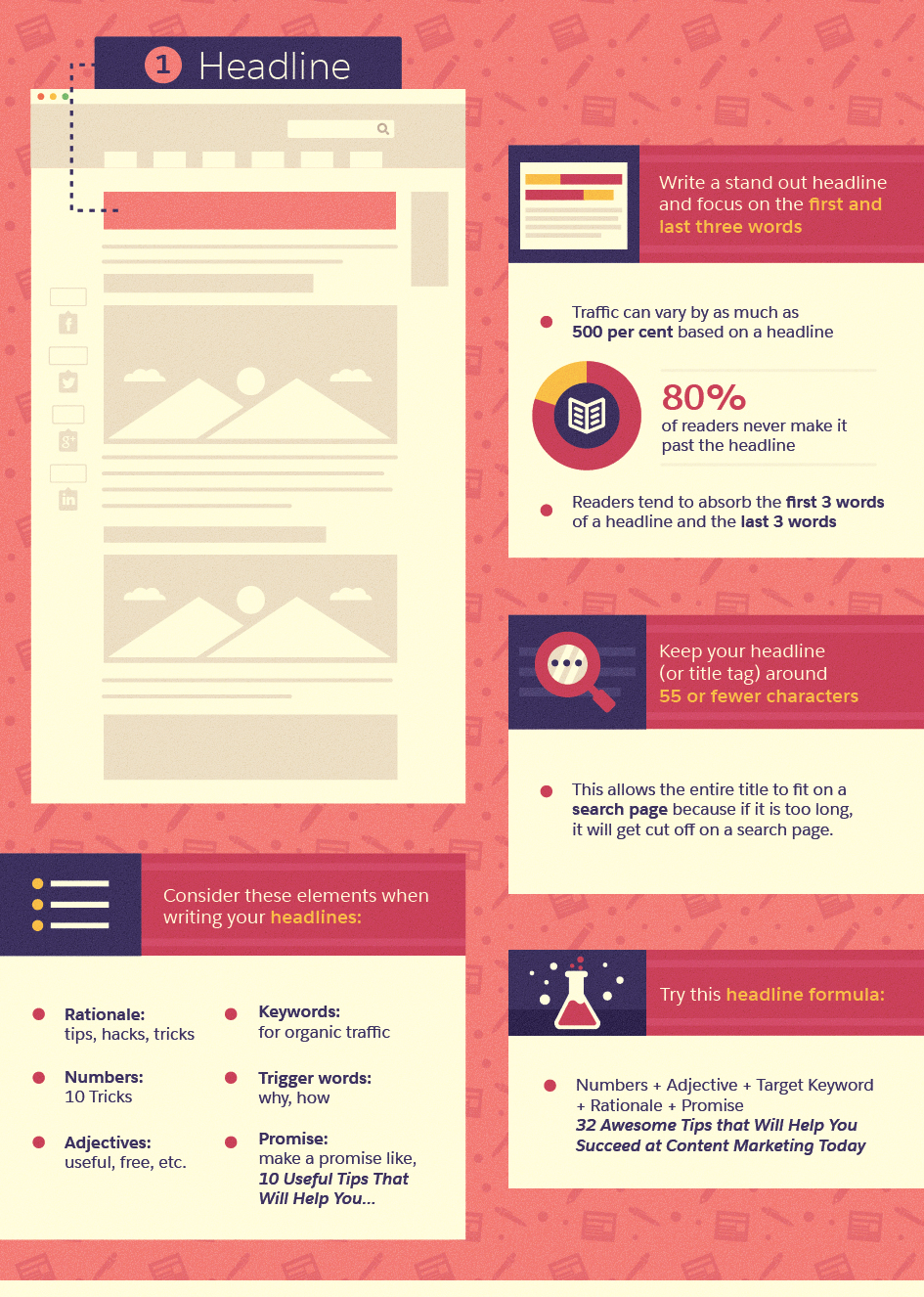
Element #2: The Introduction
Most blogging experts agree that the best introductions incorporate stories. In fact, using anecdotes in the introduction can increase readership by as much as 300 per cent and increase time spent on a page by a whopping 520 per cent.
In addition to engaging readers, the introduction should also provide a sense of what’s to come: What is the rest of the post about? How will readers benefit by reading the post? Convince readers that they have something to gain and they’ll be much more likely to read on.
Intro
- Use storytelling to start an article
- A software company found storytelling to introduce a post led to a 300% increase in readers than a post without storytelling
- These readers also spent 520% more time on page
- A software company found storytelling to introduce a post led to a 300% increase in readers than a post without storytelling
- Start posts with a story
- A personal anecdote
- An anecdote from an expert, influencer, or famous figure
- Answer readers questions upfront
- What is the post about?
- Why should I read it?
- What will I get out of it?
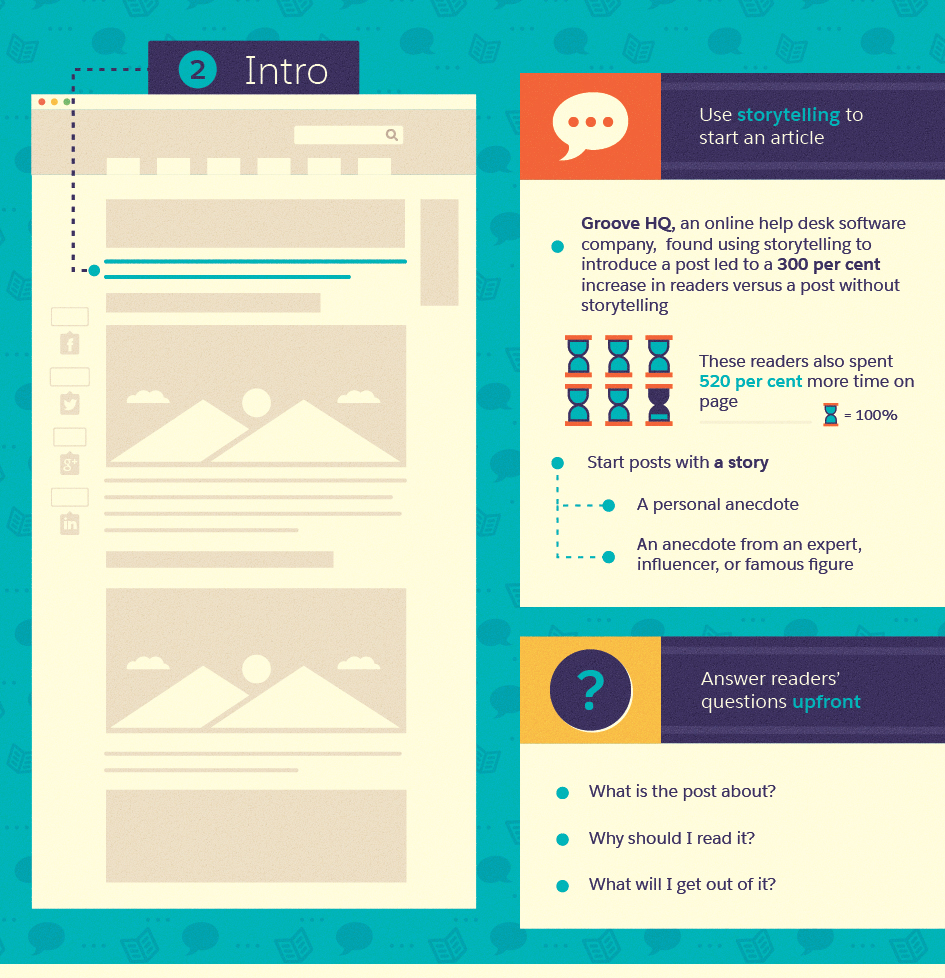
Element #3: Subheaders
When readers look at your blog, do they see a massive wall of text, or an organized and visually pleasing post? As you can imagine, the latter is a much better approach to retain readers. And that’s where subheads come in.
Aim to start every new section with a subheader, which allows readers to quickly gauge the post’s content. Subheaders have the added benefit of providing an extra SEO boost. H1 subheaders should include target keywords, while H2 subheaders can include secondary keywords or keyword synonyms. In short, subheaders are a simple and effective way to make your content more readable and boost search ranking.
Subheaders
- Use subheads so readers can scan
- You should have a subheader for every new section
- H1: Tell readers what the page is about
- There should only be one H1 tag per page
- It should relate to the target keywords and content in the post
- H2: Great for subheaders
- Can target secondary keyword terms if necessary
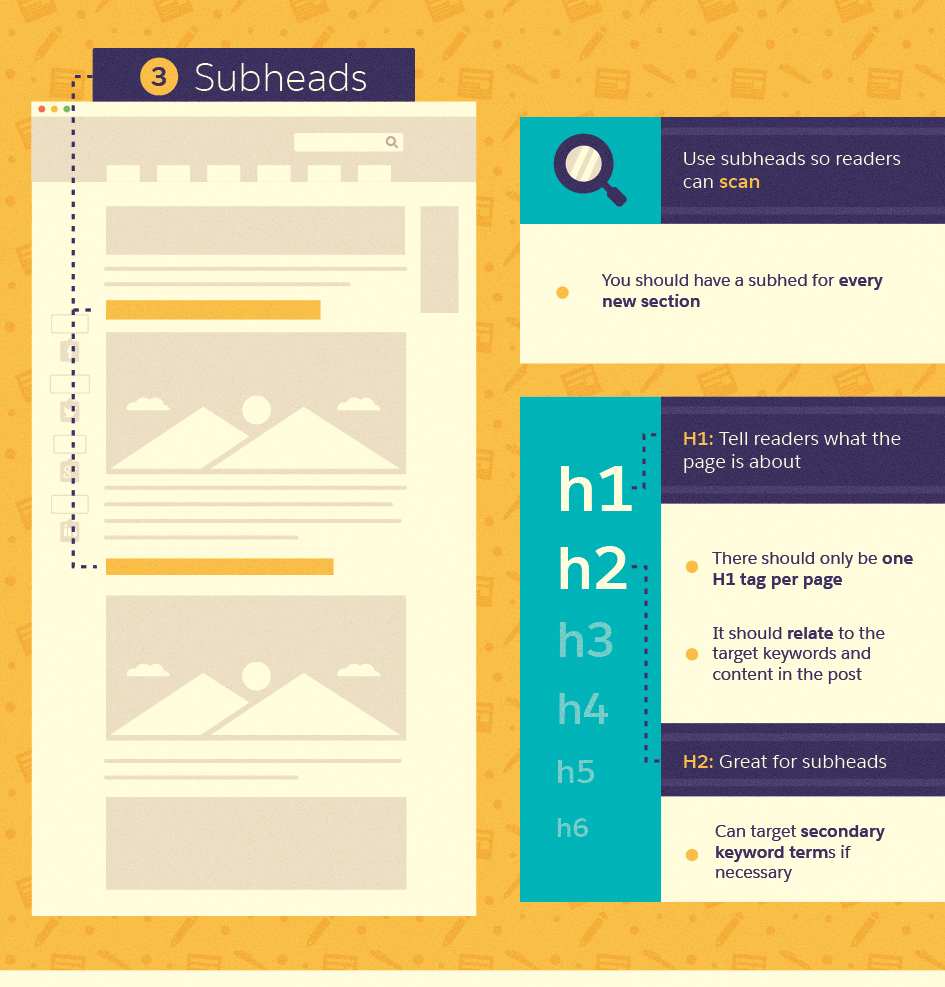
Element #4: Main Copy
A critical part of making your blog post reader-friendly is to incorporate visual assets. In fact, one study found that people recall photos six timesmore easily than text. Posts with a higher number of images also tend to draw more backlinks.
This means you should select high-quality images that are relevant to your post. Ideally, aim to include one visual for every 350 words. And remember to credit visuals when credit is due.
Main copy
- The ideal length of a blog post is 1600 words
- In other words, it should take a reader 7 minutes to read the post
- People only read 28% of the words on a page during the average page visit
- Break up the text whenever and wherever possible with:
- Bullet points
- Lists
- Charts
- Bolded sections
- Subheaders
- Visuals
- Pull quotes
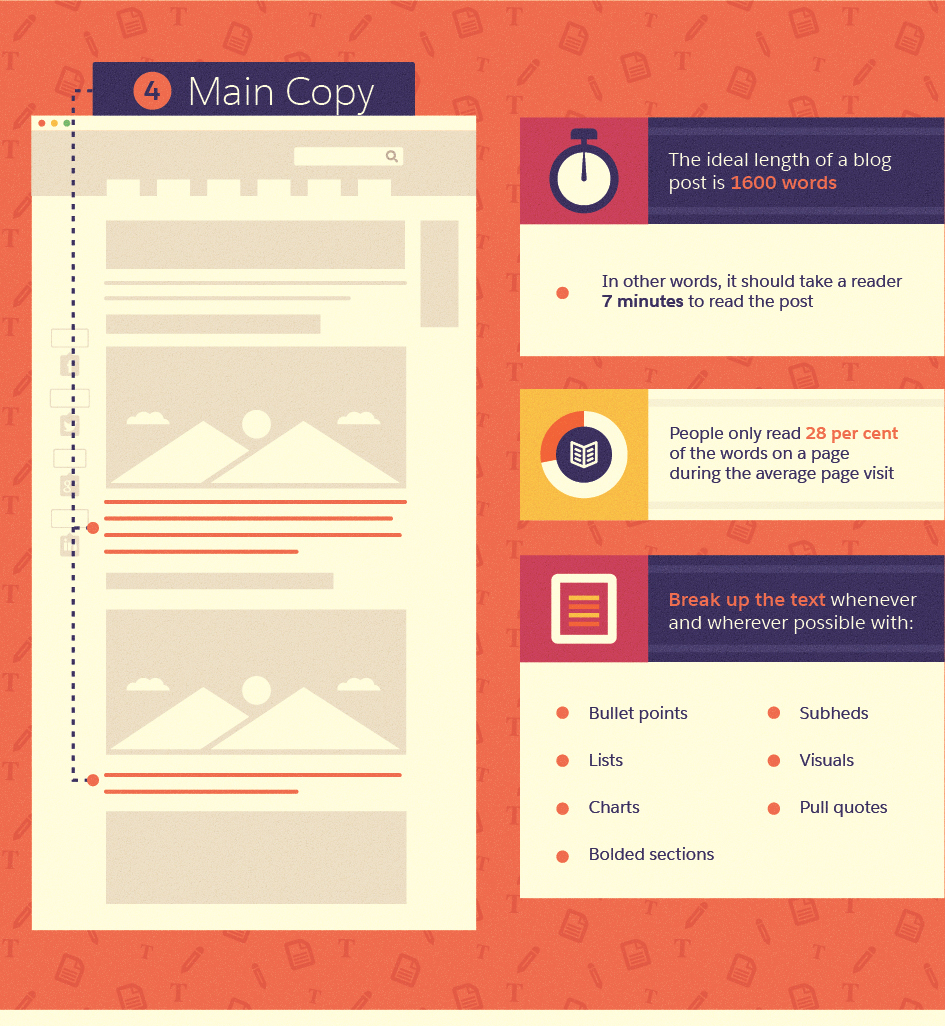
Element #5: Visual Assets
A critical part of making your blog post reader-friendly is to incorporate visual assets. In fact, one study found that people recall photos six timesmore easily than text. Posts with a higher number of images also tend to draw more backlinks.
This means you should select high-quality images that are relevant to your post. Ideally, aim to include one visual for every 350 words. And remember to credit visuals when credit is due.
Visual assets
- We remember photos 6 times easier than text
- Use plenty of quality images
- Shoot for one visual for every 350 words
- Blog posts with more images attract more backlinks
- Follow these rules of thumb. Photos, videos, and illustrations should:
- Be relevant
- Great quality
- Not have a watermark or logo
- Include a link to where it came from
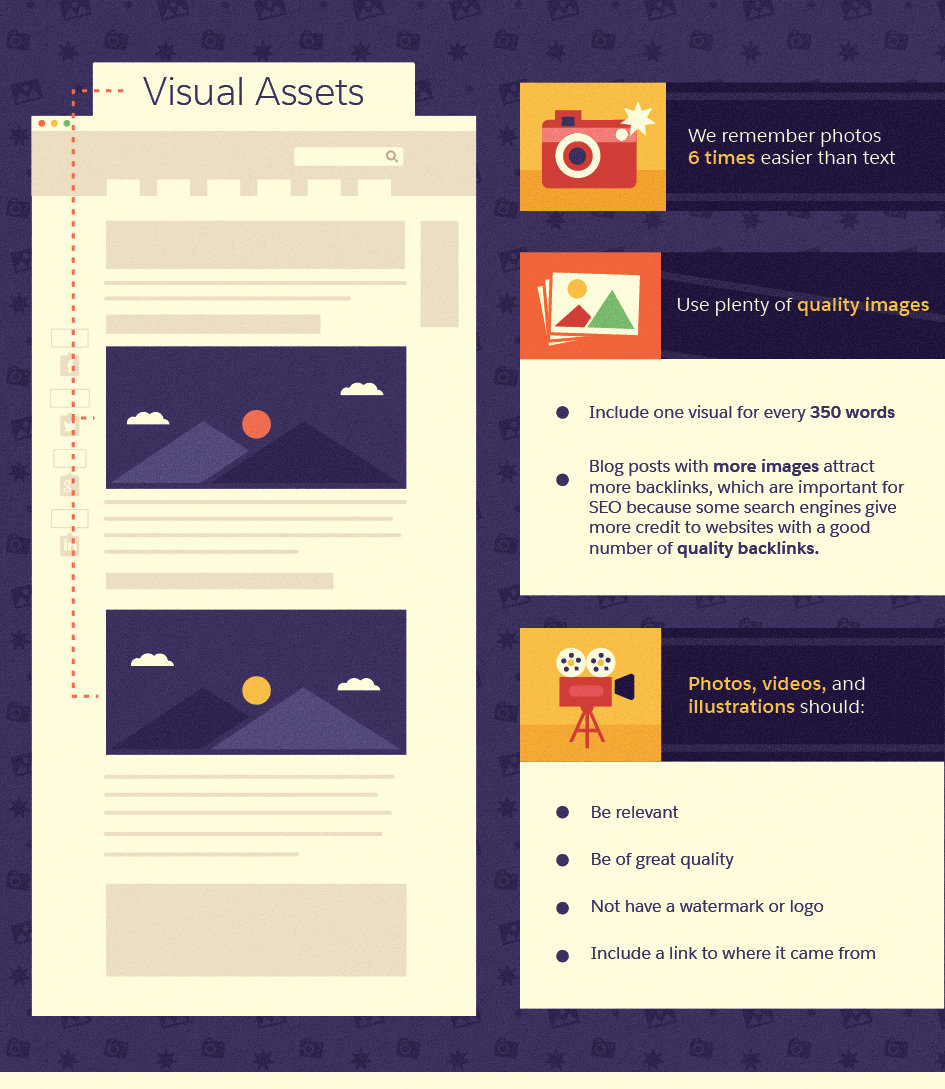
Element #6: Call to Action
If blogging is part of your business plan, then you want your posts to inspire readers to take some kind of action—whether it’s signing up for an e-course, purchasing your product, or sharing your content on social media.
The only way for readers to know what action to take after reading your post is for you to tell them. Your call to action can live in the sidebar, header, or footer of the post; what matters is that it’s there and the request is reasonable. (For example, you wouldn’t ask someone to enroll in a $10,000 course after they’ve read one blog post, but you may invite them to join your newsletter.)
Call to Action
- Include at least one CTA somewhere in your post
- Place in the sidebar, header, and/or footer
- Don’t ask for too much
- For example, offer ebooks in exchange for email addresss
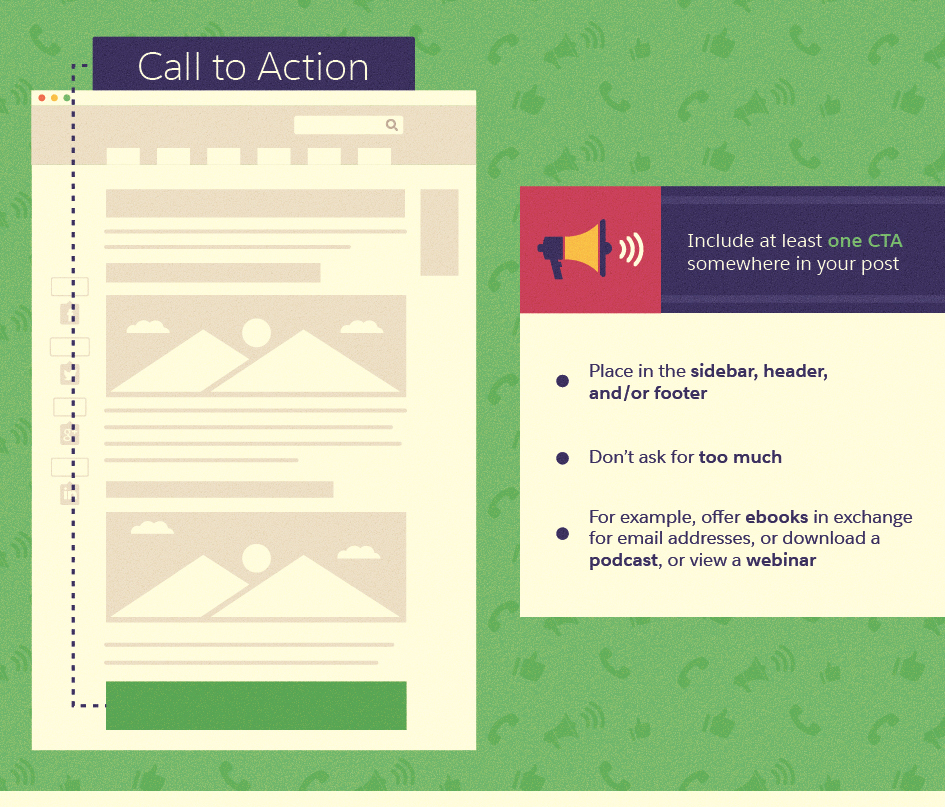
Element #7: Sharing Elements
Social sharing buttons are a simple call to action proven to increase a post’s reach. Experiment to find out whether your site benefits from share buttons that are static or floating, and whether buttons perform best in the header, footer, and/or sidebar.
Blogs are a critical component of any content marketing plan—but in order to be effective, they need to be executed well. Before crafting any post, make an outline that includes each of the elements discussed above. Emphasize quality at every stage of the process and you’ll be well on your way to blogging success.
Sharing elements
- Posts with share buttons make content 7 times more shareable than content without them
- Make it easy for readers to share the post
- Include share buttons in the header, footer, and/or sidebar
- They can be static or in a floating panel
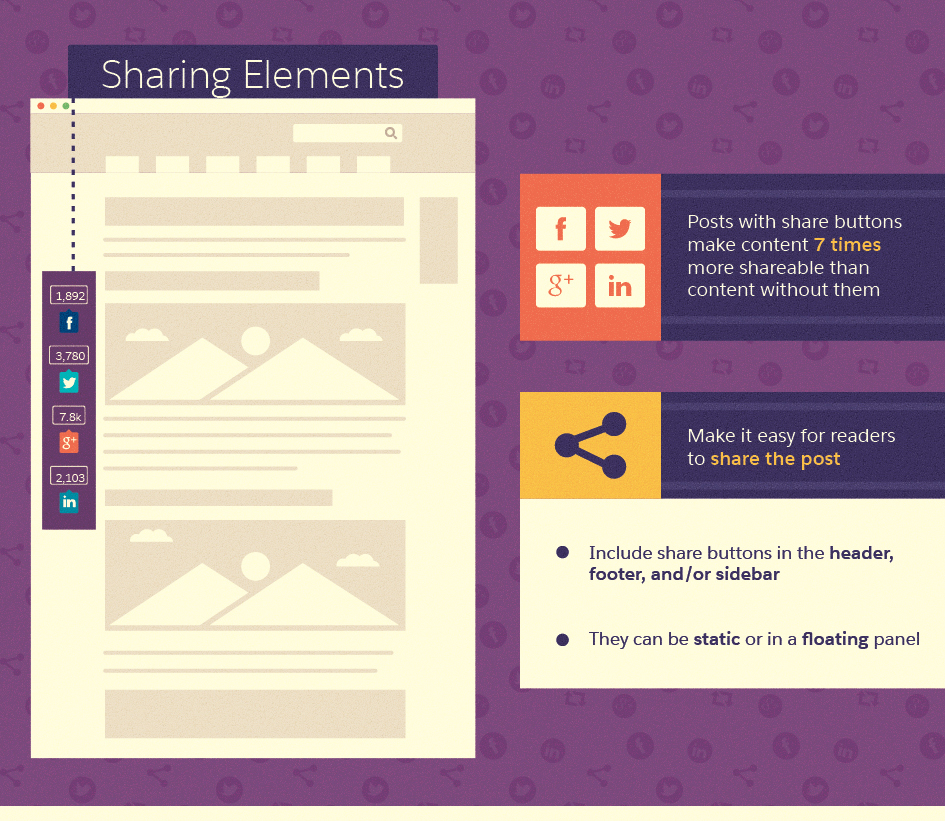
Conclusion:
Blogs are an important facet of content marketing. But are yours up to snuff? Outline your posts and make sure to include each of the key elements for blog success.
Share "The Anatomy of a Perfect Blog Post" On Your Site



